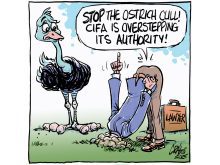Weber is an agricultural markets analyst based in Saskatoon.
“There is always hope when people are forced to listen to both sides; it is when they attend only to one that errors harden into prejudices and truth itself ceases to have the effect of truth, by being exaggerated into falsehood.” – John Stuart Mill, British philosopher and political economist
For those with short memories of grain marketing in Western Canada, the conflict over barley did not magically appear in 2006. Let us pick up the fable after the failed continental barley market in 1993.
Read Also

Budget seen as fairly solid, but worrying cracks appear
The reaction from the agriculture industry to prime minister Mark Carney’s first budget handed down November 4th has been largely positive.
After listening to farmers and farm groups across Western Canada, the Western Grain Marketing Panel issued a report in July 1996 that was commissioned by Ralph Goodale, minister responsible for the Canadian Wheat Board. The report suggested that the CWB lose its monopoly over feed barley sales.
Board critics said the report did not go far enough. However, they wanted Goodale to implement its recommendations quickly. Supporters of the CWB condemned many of the panel’s recommendations. The CWB said the loss of the export feed barley monopoly would soon put it out of barley marketing altogether. Goodale chose to listen to one side.
In February 1997 a barley plebiscite was commissioned by Goodale. There were two and only two options on the ballot. The first was the single-seller option that would retain the CWB’s monopoly over barley. The second was the open market option which would remove all barley – feed and malting – from the CWB.
Sixty-three percent voted to maintain the CWB as the single seller for all barley except feed barley sold domestically and 37 percent voted to place all barley on the open market for all domestic and export sales.
Goodale again chose to listen to one side.
In 1998, Goodale appointed five people to the board of directors and farmers elected the other 10 members of the 15 member board. Goodale heralded the move as unprecedented as it would modernize the 60-year-old institution.
In a speech to the Saskatchewan Wheat Pool’s annual meeting, Goodale said, “the board of directors will direct all of the business and affairs of the wheat board and determine its strategic direction…The new CWB will be only as strong and effective as the people you choose to direct it.”
History will show that the current and past board of the CWB has chosen to listen to one side.
Fast forward to 2007. Sixty-two percent of the 29,000 western Canadian barley farmers who voted in the second barley plebiscite said they want choice as to where to sell their barley or wanted the CWB out of barley marketing altogether. Thirty-eight percent said they supported the status quo.
The chair of the CWB, Ken Ritter, said: “The results of the barley plebiscite are not overly surprising. The CWB has been surveying farmers every year for the past 10 years and these results appear to be consistent with our annual findings.” The above is further proof that for 10 years, the CWB only listened to one side.
This preamble brings me to John Stuart Mill’s quote. For the past 10 years, if the CWB was only listening to the side that it wanted to hear, the current crop of directors, some of whom have been there since the inception of the board of directors, have been incompetent. To publicly state that for 10 years, 62 percent of farmers wanted the freedom to market their own grain and to sit idly by and do nothing is a renunciation of the accountability that Goodale visualized in 1997, however flawed his vision was.
Accountability is much greater than to those who agree with you. While Goodale can share some of the blame for the mess that barley marketing is in today, much more focus should be on the CWB’s current board as they have done little to bring both sides together in this debate. The CWB’s mandate has always been to protect the status quo at all costs. That mandate has come at a cost – a deeply divided farming community in Western Canada.
Canada’s government can learn by the mistakes of the previous government. It should take note of Mill’s quote or fall victim to the same fate that has transpired in barley marketing over the past 20 years.
Listening to one side can produce grave results. A former minister of the CWB, Charlie Mayer, said it best in December: “There has to be a happy medium between what we have today, and throwing farmers in jail for marketing their own grain.”
The current minister for the CWB believes the CWB can operate in a marketing choice environment. The current board does not. There is room for compromise.
With no compromise, relationships usually end in divorce. The CWB has chosen divorce and sources suggest a lengthy legal battle. Now farmers on both sides can ask the question: Whose position are you representing?
If the board were to answer truthfully, the answer would be: our own.














